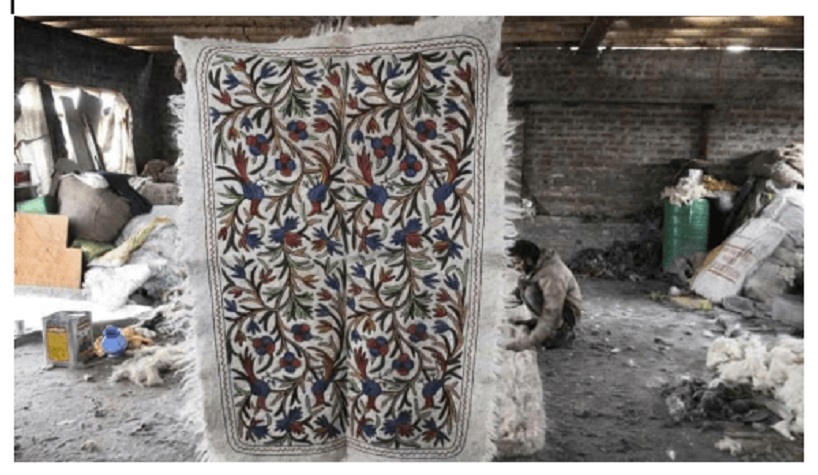
Srinagar- Namda, the near-extinct traditional woollen rug of Kashmir, is not only making a comeback in the living rooms of locals but regaining its share of international glory.
Once the most exported handicraft product of Kashmir, Namda had gone out of production due to issues of raw material quality and lack of fresh hands to take up the art.
“Namda used to fetch us more revenue than Pashmina and carpets. In order to revive this art, the Department of Handicraft has established 11 training centres, where youth have been trained to make Namda,” Director of the Department of Handicrafts Mahmood Ahmad Shah told PTI.
“In order to increase productivity, a small machine has been made by IIT Roorkee with whom we have collaborated and the machines have been installed at the centres,” he said.
He said the raw material requirements have been facilitated by Bagh-e-Ali Mardan Khan Institute of Carpet Technology where carding of wool is being done and then supplied to training, corporate centres, and artisans.
Shah said Prime Minister Narendra Modi’s tweet on the revival of Namda craft has encouraged the artisans.
“PM Modi’s tweet on Namda is a huge encouragement for us and he is consistently promoting Kashmir’s art through his attire. This is a highly motivating thing for the artisans and for the craft,” he added.
Amina, one of the several Namda artisans, said she was not aware of the traditional art of Kashmir earlier.
“As this is a traditional art form of Kashmir, we as artisans want to keep this legacy alive,” she said.
Another artisan Kausar said Namda making will generate livelihood opportunities.
“Being associated with this art form and rug making will aid in employment generation opportunities as it has for me. This art was dying but through the efforts of the Department of Handicraft, this training centre has been set up that will help in keeping the legacy alive,” she added.
Imran Ahmad Shah, an instructor, said the idea behind setting up the centres was to revive and uphold the legacy of the traditional art form in Kashmir.
“At Mir Behri centre, 20 young women have been trained in Namda making which also helps in generating employment for these women and if we put more efforts into reviving this art form, it will increase employment opportunities for the youth of Kashmir,” he said.
“I believe that if the youth of Kashmir start taking interest in the heritage and culture of Kashmir it will benefit in reviving the dying art as well as help in getting rid of the current unemployment rate of Kashmir,” the instructor said.
To boost the revival of Namda making, the government has brought it under the artisan credit card scheme and loans are given to artisans.
“My father was an artist who made Namdas. In the 1970s, export was in tens of crores of rupees but in the 1990s, Namda making faced a downfall. By opening up centres where young people are being trained and educated in this craft, a revival of the art is possible,” he said.
Cold European countries were the prime international buyers for Namda. Besides woolen Namda, Pashmina Namda is also made by one of the artists of Kashmir which gets exported to Italy, the director said.
“But unfortunately due to lack of quality supervision and maintenance of the parameters of Namda, it resulted in its downfall. Now in order to address this issue, QR code-based labelling has been adopted,” he added.
To further boost the Namda production, the Department of Handicraft Kashmir with the help of the central government has initiated the setting up of the raw material bank that has already been sanctioned. In order to boost production, a project to introduce machines is also in the pipeline.
Follow this link to join our WhatsApp group: Join Now
Be Part of Quality Journalism |
Quality journalism takes a lot of time, money and hard work to produce and despite all the hardships we still do it. Our reporters and editors are working overtime in Kashmir and beyond to cover what you care about, break big stories, and expose injustices that can change lives. Today more people are reading Kashmir Observer than ever, but only a handful are paying while advertising revenues are falling fast. |
| ACT NOW |
| MONTHLY | Rs 100 | |
| YEARLY | Rs 1000 | |
| LIFETIME | Rs 10000 | |










